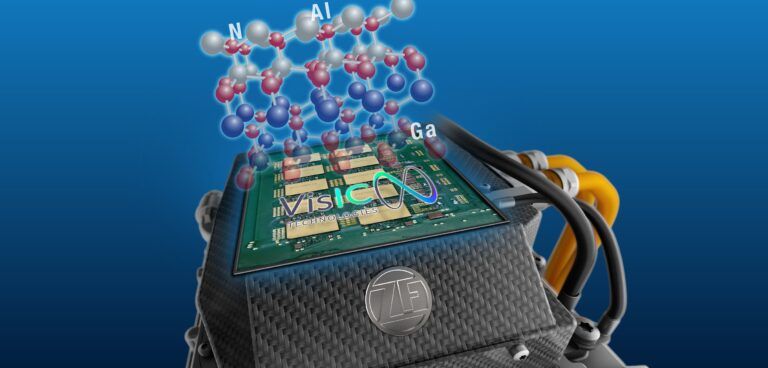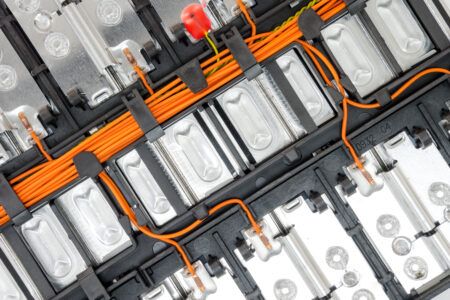Inverters play an essential role in the efficiency and performance of an electric vehicle powertrain system, and a new breakthrough technology is being developed to enhance future systems.
Automotive supplier ZF and VisIC Technologies have announced a partnership to create the next generation of high-performance and high-efficiency electric drivelines for vehicles.
The partnership will see the two companies deepen their development efforts, based on VisIC D3GaN semiconductors technology. The focus of the joint efforts will be on 400-Volt driveline applications, covering the largest segment of the electric vehicle market.
“Our partnership with ZF for the development of gallium nitride-based power inverters in electric vehicles illustrates the break-through of gallium nitride technology in the automotive industry,” said Tamara Baksht, CEO of VisIC. “VisIC’s D3GaN technology was developed for the high-reliability standards of the automotive industry and offers the lowest losses per Rdson. It also simplifies the system solution and enables high-efficiency and affordable power train solutions. It is definitely the next step for the automotive electrical driveline.”
ZF’s fast adoption of wide band gap semiconductor technology, such as silicon-carbide and gallium nitride, makes it a leader in the development of the most cost-effective and highly efficient electric drivelines. Through their extended R&D partnership, ZF and VisIC deepens their existing joint efforts in the application of gallium nitride semiconductors for inverters.
Gallium nitride semiconductors are key to further improve efficiency and performance of electrified vehicles, from hybrid up to full electric applications. This technology offers significantly better switching speed, range improvements as well as smaller and lighter package size, thereby reducing total system cost. “We are pleased about the cooperation with VisIC and are convinced that together we can further improve future electric drive systems based on gallium nitride technology,” said Dr. Dirk Walliser, senior vice president corporate research and development at ZF Friedrichshafen AG.





